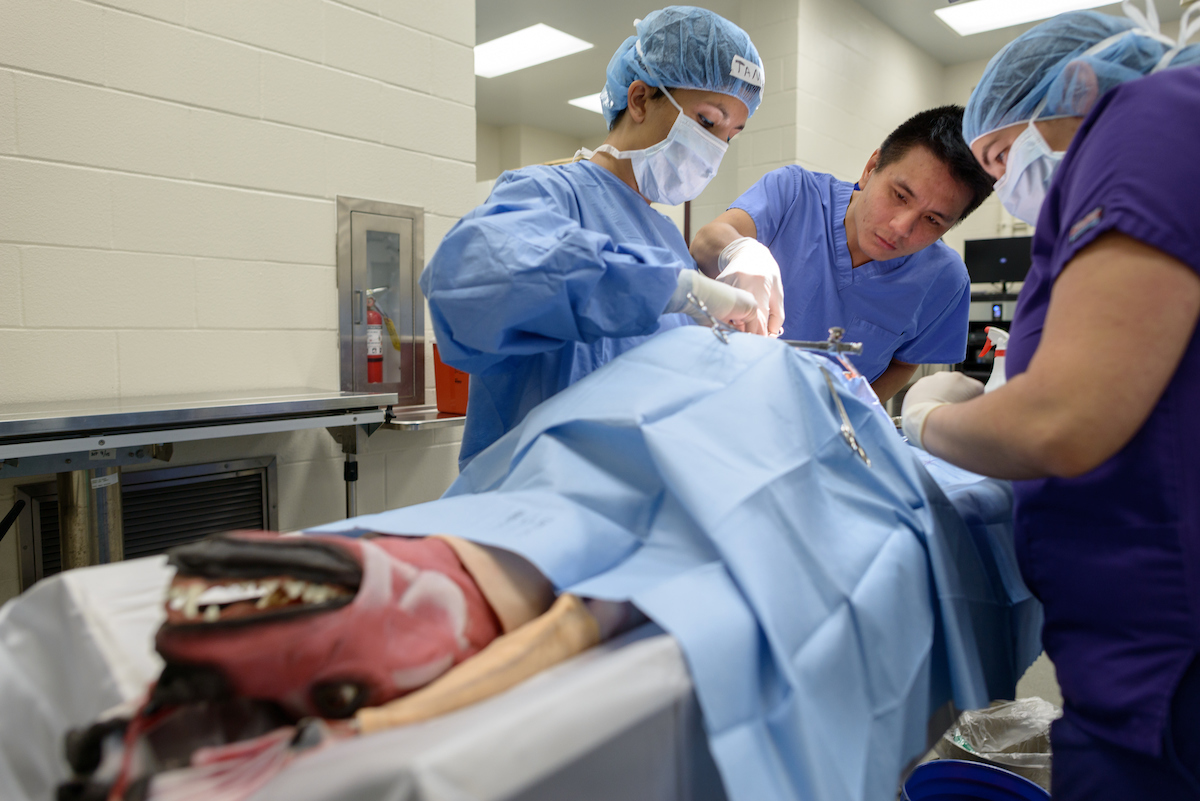JJ McCarthy’s Surgical History: Jj Mccarthy Surgery

JJ McCarthy, the talented quarterback for the University of Michigan Wolverines, has not publicly disclosed any information regarding previous surgeries. This lack of information makes it impossible to provide details about any specific procedures, their dates, or outcomes. It’s important to respect an individual’s privacy, especially when it comes to medical information that hasn’t been shared publicly.
Potential Impact of Previous Surgeries on Athletic Performance
Without knowing the specifics of any past surgeries, it’s difficult to assess their potential impact on JJ McCarthy’s current athletic performance. However, any surgical procedure, regardless of its nature, can potentially affect an athlete’s physical capabilities. This impact can range from temporary limitations during recovery to long-term effects on mobility, strength, and endurance.
Potential Surgical Risks and Complications
The potential risks and complications associated with any surgery depend heavily on the specific procedure performed. However, some general risks associated with surgical interventions include:
– Infection
– Bleeding
– Blood clots
– Anesthesia complications
– Pain
– Scarring
– Limited range of motion
It’s crucial to remember that these are general risks, and the specific risks associated with any surgery would be determined by a medical professional based on the individual’s medical history, the nature of the procedure, and other factors.
Common Surgeries for Athletes

Athletes, especially those in high-impact sports, are prone to injuries that may require surgical intervention. Understanding the common surgeries performed on athletes, particularly those relevant to quarterbacks, is crucial for comprehending the risks, benefits, and recovery processes involved.
Shoulder Surgeries
Shoulder injuries are common among quarterbacks, as they often experience repetitive overhead motions and forceful throws. Shoulder surgeries aim to address various issues, including:
- Rotator Cuff Tears: These involve tears in the muscles and tendons that surround the shoulder joint. Surgery typically involves repairing the torn tissue. Recovery time can vary depending on the severity of the tear, but it usually takes several months.
- Labral Tears: The labrum is a ring of cartilage that helps stabilize the shoulder joint. Labral tears can be caused by a direct impact or repetitive motions. Surgery typically involves repairing or removing the torn labrum. Recovery time is usually a few months.
- Shoulder Instability: This occurs when the shoulder joint dislocates or subluxes. Surgery may be necessary to repair ligaments or tendons that have been stretched or torn. Recovery time can vary but is usually several months.
Elbow Surgeries
Elbow injuries are less common in quarterbacks compared to shoulder injuries but can still occur. Surgeries may be required for:
- Ulnar Collateral Ligament (UCL) Tears: The UCL is a ligament that helps stabilize the elbow joint. Tears are common in baseball pitchers but can occur in quarterbacks due to forceful throws. Surgery typically involves reconstructing the ligament. Recovery time can take several months.
- Tommy John Surgery: This procedure is a specific type of UCL reconstruction surgery that uses a tendon graft from elsewhere in the body to replace the torn ligament. Recovery time for Tommy John surgery can take 12-18 months.
Knee Surgeries, Jj mccarthy surgery
Knee injuries are less common in quarterbacks but can occur due to collisions or sudden changes in direction. Surgeries may be necessary for:
- Anterior Cruciate Ligament (ACL) Tears: The ACL is a ligament that helps stabilize the knee joint. Tears are common in athletes who experience sudden stops or changes in direction. Surgery typically involves reconstructing the ligament using a graft from another part of the body. Recovery time can take 6-9 months.
- Meniscus Tears: The meniscus is a C-shaped piece of cartilage that acts as a shock absorber in the knee joint. Tears can occur due to trauma or overuse. Surgery may involve repairing or removing the torn portion of the meniscus. Recovery time can take several weeks to months depending on the severity of the tear.
Hand and Wrist Surgeries
Hand and wrist injuries are less common in quarterbacks but can occur due to fumbles or other contact during the game. Surgeries may be necessary for:
- Fractures: Fractures of the hand or wrist can occur due to impact. Surgery may be necessary to stabilize the fracture. Recovery time can vary depending on the severity of the fracture but usually takes several weeks to months.
- Ligament Tears: Ligaments in the hand and wrist can be torn due to trauma. Surgery may be necessary to repair or reconstruct the torn ligament. Recovery time can take several weeks to months depending on the severity of the tear.
The Role of Surgery in Athletic Recovery

Surgery plays a crucial role in the recovery process for athletes, especially those who have sustained significant injuries. It can be used to repair damaged tissues, stabilize joints, and restore function. In many cases, surgery is the only way to return an athlete to their pre-injury level of performance.
Surgical Rehabilitation
Surgical rehabilitation is a structured process that helps athletes regain their strength, flexibility, and function after surgery. It typically involves a combination of physical therapy, medication, and other interventions.
Physical Therapy
Physical therapy is an essential component of surgical rehabilitation. It helps to strengthen muscles, improve range of motion, and restore balance and coordination. Physical therapists work with athletes to develop a personalized exercise program that is tailored to their specific needs and goals.
Medication
Medication may be prescribed to manage pain, reduce inflammation, and prevent infection. Pain relievers, anti-inflammatory drugs, and antibiotics are commonly used during the rehabilitation process.
Other Interventions
Other interventions that may be used during surgical rehabilitation include:
- Bracing or splinting: Braces and splints can help to support and protect injured areas while they heal.
- Massage therapy: Massage can help to improve circulation, reduce muscle tension, and promote healing.
- Electrical stimulation: Electrical stimulation can help to strengthen muscles and reduce pain.
Timeline for Surgical Recovery
The timeline for surgical recovery varies depending on the type of surgery, the severity of the injury, and the individual athlete’s response to treatment. However, a typical surgical recovery process can be divided into several stages:
Stage 1: Immediate Post-Surgery (Days 1-14)
During the immediate post-surgery period, the focus is on controlling pain and inflammation, preventing infection, and promoting wound healing. Athletes will typically be on bed rest for a few days and may have to wear a brace or splint. They will also be monitored closely for signs of complications.
Stage 2: Early Rehabilitation (Weeks 2-6)
As the wound begins to heal, athletes will start to gradually increase their activity level. They will begin with gentle range-of-motion exercises and progress to strengthening exercises as tolerated. They may also start to use assistive devices, such as crutches or walkers, to help them move around.
Stage 3: Advanced Rehabilitation (Weeks 6-12)
During the advanced rehabilitation phase, athletes will continue to increase their activity level and progress to more challenging exercises. They may start to participate in sport-specific drills and activities. The goal at this stage is to regain full strength, flexibility, and function.
Stage 4: Return to Sport (Weeks 12+)
Once athletes have regained full strength, flexibility, and function, they can begin to gradually return to their sport. The return-to-sport process is carefully monitored by medical professionals to ensure that athletes are ready to compete safely.
Jj mccarthy surgery – JJ McCarthy’s surgery, while shrouded in some mystery, is likely related to a common sports injury. A torn meniscus, as described in this article , is a frequent occurrence in athletes, especially those engaged in high-impact activities. It’s possible that McCarthy’s surgery aimed to address this specific injury, though the exact nature of the procedure remains unclear.
JJ McCarthy’s surgical procedure, though a necessary step in his recovery, casts a shadow over his upcoming season. The success of the surgery hinges on his ability to fully recover from the jj mcarthy injury , a setback that has undoubtedly impacted the Michigan Wolverines’ offensive strategy.
The surgery’s long-term effects will determine the trajectory of his career, and the Wolverines’ hopes for a successful season depend heavily on his return to full health.
